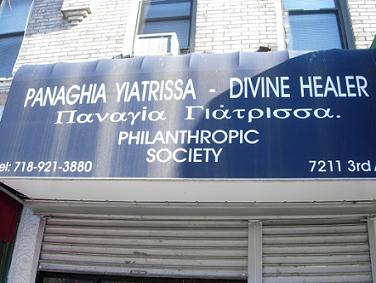Bay Ridge- What's Real
From Decoding New York
| Introduction |
| The East Village |
| * Evolution |
| * Here v. There |
| * Economy |
| * What's Real |
| Bay Ridge |
| * Evolution |
| * Here v. There |
| * Economy |
| * What's Real |
| Comparison |
| * Photo Gallery |
| * Sources
|
Unlike other traditionally ethnic neighborhoods in New York that have become commercialized over the years and are now considered tourist attractions, Bay Ridge remains authentic and loyal to its own residents, with the majority of its economy coming from small immigrant businesses. I walked into a middle-eastern grocery store on Fifth Avenue and spoke to the butcher who was behind the backmost counter. He told me that he is a Lebanese Muslim, like the store’s owner, and that he rarely saw customers outside the Arab community, which is predominantly Lebanese, Egyptian, and Syrian. When I asked him—in an attempt to defy the stereotype that there are tensions between the Arab and Italian-Irish communities—whether he interacted much with non-Arabs in the community, he replied no, because of the language and cultural barriers, but that he’d never felt as though there was any hostility between the two groups.
In fact, all of the small businesses I walked into—an Italian market, a Polish grocery store, a Greek pharmacy, as well as many of the Arab businesses along Fifth Avenue—all had people of that ethnicity working inside, mostly immigrants themselves and some second-generation, indicative of this neighborhood’s authenticity.
Walking down Third Avenue, I encountered a group of teenagers dressed in Catholic school uniforms and decided to interview them, curious for a younger perspective on the issue of ethnic-based conflict. One of the teenagers, a 17-year old Italian male, replied that his girlfriend is Lebanese and that while there may be individual conflicts that occur between Arabs and non-Arabs in the community, these incidents are not representative of the communities as a whole. Another teenager, nicknamed “Moe”, informed me that he is the son of Syrian Muslim immigrants, and that he attends the Catholic school, Xaverian: “I go to Xaverian because my parents wanted me to have a good education, but I’m still Muslim, you know, they’re two separate things…I have Italian friends, Irish, Lebanese, whatever, we don’t hang out because of our religion, we chill ‘cause we’re friends.”
It appears, then, that the lack of Arab assimilation is in great part due to their very recent arrival in the community. Based on these street interviews, one can conclude that the second-generation Arab-Americans who are raised here have much more significantly adapted to American culture than their parents. It may be that in several decades this ethnic group will follow the paths of its predecessors, and fewer differences will exist between the divergent cultures of Bay Ridge.

